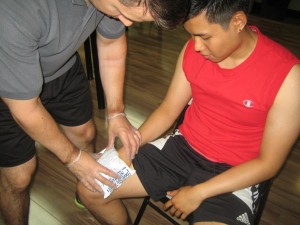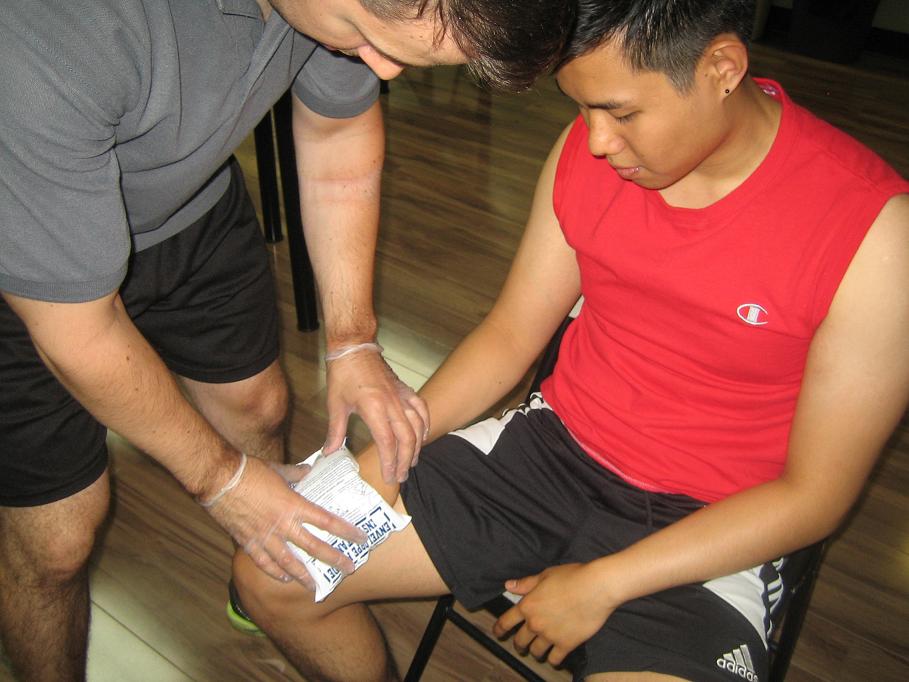https://www.youtube.com/watch?v=JqP6bDfFFfI
Children are more susceptible to accidents because of their age. That is why parents need to be mindful concerning their child’s safety and health at all times. There are common adolescent health hazards that can cause a significant threat to a child’s health which includes drowning, poisoning and burns. This page will outline the common emergencies that can face a child. The material posted on this page on common child health hazards is for learning purposes only. To learn to manage burns, breathing emergencies, poisonings and more register for a first aid and / or CPR course today.
Drowning
Near drowning is an emergency situation because death can result in suffocation and asphyxia. More than 3,500 children die yearly from drowning. It is the second most common cause of death of unintentional injury among children. If your child drowned, apply first aid with these steps:
- Start mouth-to-mouth resuscitation immediately after the child is pulled out of the water.
- Start cardiopulmonary resuscitation simultaneously if cardiac arrest occurred.
- Bring the child immediately to the nearest health center or hospital.
- Wrap the child with a warming blanket if the temperature is very low.
Poisoning
Children tend to put anything in their mouth. Common agents that cause childhood poisoning are soaps, detergents, cleaners, and medicines. You can prevent the dangers of poisoning by doing the following:
- Call your local poison control center to ask for advice. Follow their instructions.
- Determine the type of poison and the route of poisoning as much as possible. Bring along empty bottle of pills.
- Bring the child urgently to a nearest health facility.
Burns

Burns in children is common. They are often burned by pulling pans of scalding water, biting electrical cords, touching a hot iron, and playing with matches and candles. Burn in children is more serious than burns in adults because the same size of the burn can cover a larger surface in a child’s body.
Minor burns management
- Apply ice immediately to cool the skin or submerge the affected area in cool water.
- Apply an analgesic-antibiotic ointment on the burn and cover with a sterile gauze bandage to prevent infection.
- Bring the patient for a follow up / check-up after two days for evaluation of a secondary infection.
Moderate burns management
- Do not rupture the blisters.
- Apply cool running water to the area
- Cover the burn with a topical antibiotic such as silver sulfadiazine and a bulky sterile dressing.
- Bring the patient to a follow-up check-up after one day for evaluation of secondary infection.
Severe Burns
- This is a critical situation where the child needs to be immediately hospitalized for life-saving treatments.
CPR in children
Knowing cardiopulmonary resuscitation may be helpful in various situations such as airway obstruction, trauma, drowning, and cardiopulmonary arrest.
- Check for responsiveness by tapping the child’s shoulders and call the child’s name twice to verify that the child is not just asleep.
- If the child does not respond, call your local emergency number for help.
- With the child lying on the back, open the airway and feel / look for air movement and a rising chest. If there is no breathing, start 30 compression’s using the heel of one hand. Measure one or two finger from the sternal-costal notch and place your palm over the area. Compress in a rate of 100 beats per minute at depth of about 2/3 of the child’s chest.
- Tilt the head backward, pinch the child’s nose tight and give two gentle rescue breaths, pausing between rescue breaths to allow air to flow back.
- Repeat the cycle until exhausted or the child is revived.
Reference:
Pillitteri, A. (2007). Maternal and Child Health Nursing. NY:Lippincott Williams & Wilkins.
